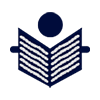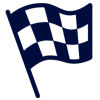February was a good month for the pharma sector, complete with some important deals, successes from clinical trials and healthy fourth quarter (Q4) results announced by some drugmakers. The market cheered the good news — the Nasdaq Biotechnology index gained 1 percent from 4,385.06 to 4,428.56, the SPDR S&P Biotech ETF index spiked 12 percent to 98.42 after ending January at 87.43. The S&P Biotechnology Select Industry Index (SPSIBI) soared 16 percent from 6,815.3 to 7,896.47 in February.The month saw some big acquisitions. Novo Holdings, the parent
company of Novo Nordisk, acquired contract
development and manufacturing organization (CDMO) Catalent for US$ 16.5 billion. Novo Holdings plans to sell
three of Catalent’s “fill-finish” sites to Novo Nordisk for US$ 11 billion. Novo’s game plan hasn’t gone down well with its arch rival in the diabetes and obesity segment Eli Lilly. The Indianapolis-headquartered drugmaker has called for a scrutiny of the deal as it relies on Catalent for some of its diabetes and obesity drugs that compete with Novo’s meds.Both Novo and Lilly have been struggling to meet the demand for
their weight loss meds. With the acquisition of this key CDMO, Novo has scored
an edge over competition.Meanwhile, Gilead boosted its liver portfolio
with the US$ 4.3 billion acquisition of CymaBay Therapeutics. And Novartis announced the
acquisition of cancer treatment developer MorphoSys for € 2.7 billion (US$ 2.9 billion). With this buyout, Novartis gets a late-stage, rare bone-marrow cancer treatment — pelabresib — that holds plenty of promise.Several drugmakers announced their Q4 results last month. Notable
amongst them was Eli Lilly, as it posted a 28 percent increase in revenues — from US$ 7.3 billion in Q4 2022 to US$ 9.4 billion led by its new products Mounjaro and Zepbound. GSK touted the “exceptional launch of Arexvy”, the world's first RSV vaccine, as it brought in sales of £ 1.2 billion (US$ 1.52 billion) in 2023. And Merck’s Keytruda saw a 19 percent increase in its sales in 2023 — at US$ 25 billion.Access the Pipeline Prospector Dashboard for February 2024 Newsmakers (Free Excel)FDA okays Iovance’s T-cell therapy; Roche’s asthma med okayed for food allergiesThe US Food and Drug Administration (FDA) granted accelerated approval to Iovance Biotherapeutics’ cell therapy — Amtagvi (lifileucel) — for treating the deadliest form of skin cancer. Amtagvi is the first and only one-time, individualized T cell
therapy to receive FDA approval for a solid tumor cancer. Iovance hopes to start reporting noteworthy revenue in the second quarter of 2024, despite the fact that Amtagvi comes with a boxed warning (the highest safety warning) for treatment-related mortality. FDA also approved Takeda’s Eohilia as the first oral treatment for an allergic inflammation
of the esophagus. Eohilia (budesonide oral suspension) was on course to becoming the first treatment for eosinophilic esophagitis (EoE) until it was rejected by the FDA in December 2021.In January, Sanofi and Regeneron’s jab Dupixent had pipped Eohilia to become
the first FDA drug approved for EoE. The
chronic condition can make it very hard for patients to consume food.
Dupixent (dupilumab) is injected weekly or biweekly and two pens cost US$ 3,803.20. In contrast, Takeda’s drug is taken twice daily and costs US$ 1,875 per month.Roche and Novartis’ asthma drug Xolair (omalizumab) became the first FDA-approved med to help people with
food allergies avoid severe reactions following accidental exposure. This opens the drug to
around 17 million people in the US whose allergies can potentially be deadly.Access the Pipeline Prospector Dashboard for February 2024 Newsmakers (Free Excel) Boehringer’s obesity candidate, Lilly’s tirzepatide show promise in trials for MASHBoehringer Ingelheim announced promising phase 2 trial data for its experimental obesity
drug survodutide in treating metabolic
dysfunction-associated steatohepatitis (MASH), a liver disease. The drug is
being developed in collaboration with Zealand Pharma. It had received a fast-track designation from the
FDA in June 2021. MASH causes histologic liver damage and occurs in
patients who are not alcoholics and who are often obese or have type 2
diabetes.The trial met its primary endpoint with survodutide reaching a biopsy-proven
improvement in MASH after 48 weeks. Survodutide also met all secondary
endpoints, including a statistically significant improvement in liver fibrosis.
The companies said this potentially positions it as a “best-in-class” treatment. The drug belongs to the glucagon-like peptide 1 (GLP-1) class of drugs.In another trial, Eli Lilly announced positive results from a phase 2 study
of tirzepatide in adults with MASH — 74 percent of participants were cured of MASH and their fibrosis also did not worsen at 52 weeks (as compared to nearly 13 percent for participants in the placebo group).Access the Pipeline Prospector Dashboard for February 2024 Newsmakers (Free Excel) J&J’s autoimmune drug posts trial gains; Sanofi’s frexalimab shows benefit in MSOne of Johnson & Johnson’s most watched experimental drugs — nipocalimab — posted positive results in trials for the treatment
of two autoimmune disorders. In a phase 3 study, nipocalimab significantly
reduced symptoms of generalized myasthenia gravis (GMG). And, in a phase 2
study, it helped reduce the severity of Sjögren’s disease (SjD). GMG weakens the skeletal muscles and particularly affects control of the limbs, throat, mouth, and eyes. SjD is an immune disorder that is identified by symptoms like dry eyes and dry mouth. J&J expects over US$ 5 billion from this drug. In a phase 2 trial, Sanofi’s frexalimab significantly slowed disease activity in people with relapsing multiple sclerosis (MS). In December last year, the French multinational had named frexalimab as one of three “pipeline-in-a-product” assets with the potential of generating annual peak sales in excess of €5 billion (US$ 5.4 billion). The
phase 2 results give credence to those expectations.In trial failures, Gilead (stock down 8
percent) said the FDA has paused all trials of its drug magrolimab in the treatment of two blood cancers – acute myeloid leukemia (AML) and myelodysplastic syndromes (MDS) – because of increased risk of patient death (when used in combination with azacitidine plus venetoclax). Magrolimab was the lead candidate of Gilead’s US$ 4.9 billion acquisition of Forty Seven in 2020.Access the Pipeline Prospector Dashboard for February 2024 Newsmakers (Free Excel) Our viewThe year has gotten off to a good start with drugmakers posting healthy Q4 results and the indices showing some positive growth month-on-month. Several drugmakers have entered 2024 with a simplified business model and an increased strategic focus on R&D. Given the favorable demand, we are hopeful of a better year for the industry, as opposed to the volatility of the last two years.Access the Pipeline Prospector Dashboard for February 2024 Newsmakers (Free Excel)







